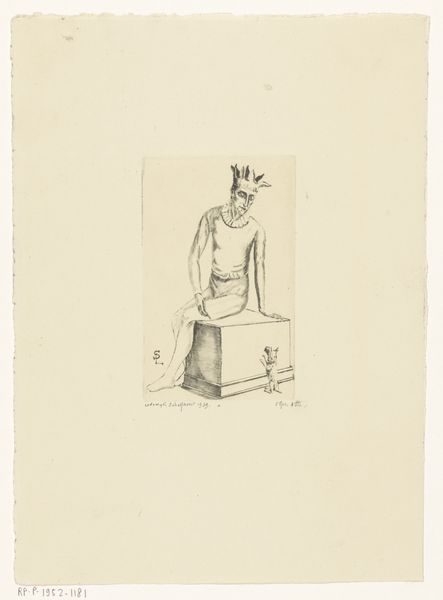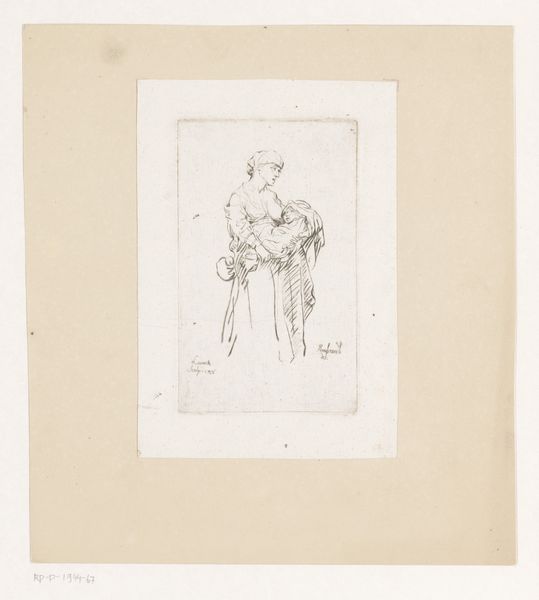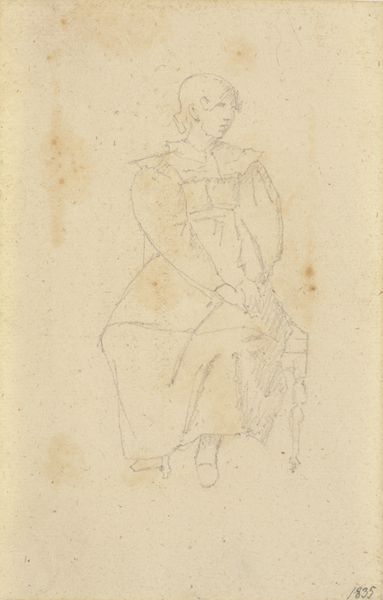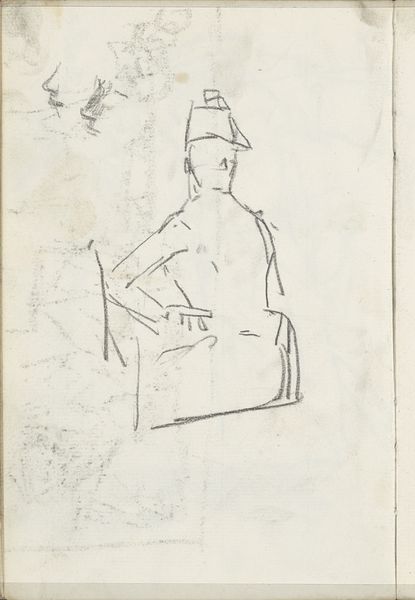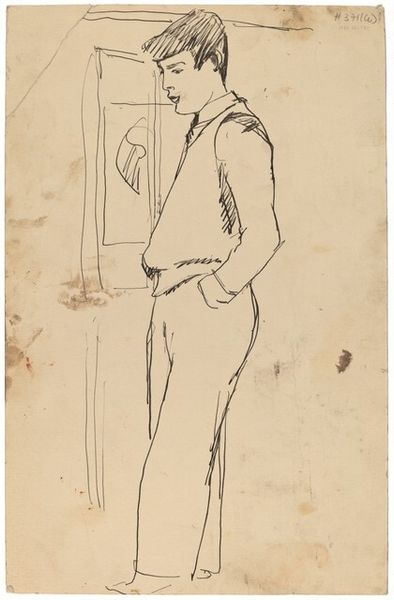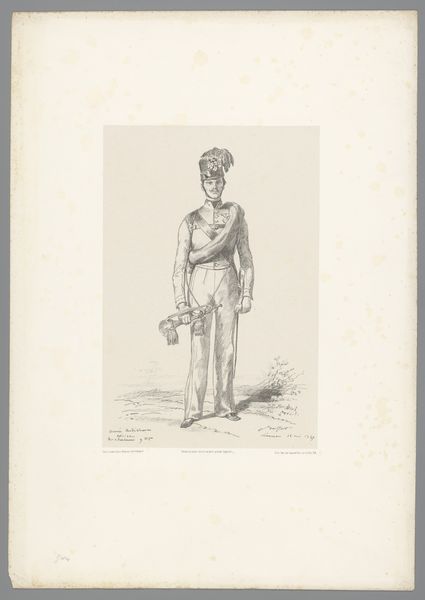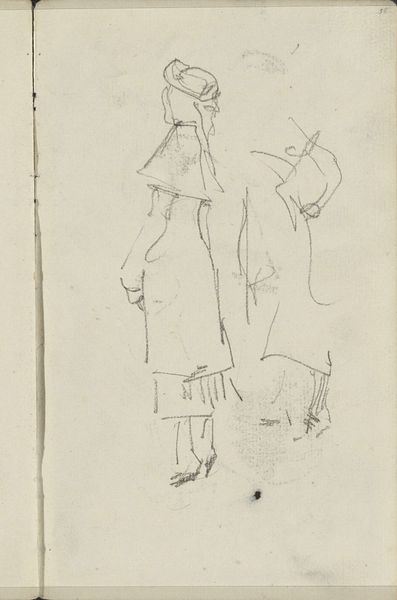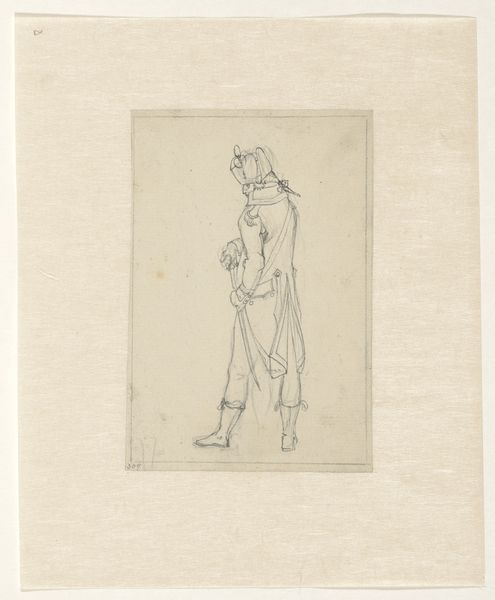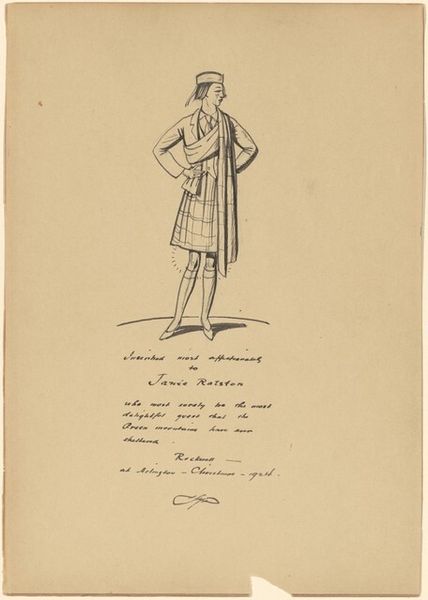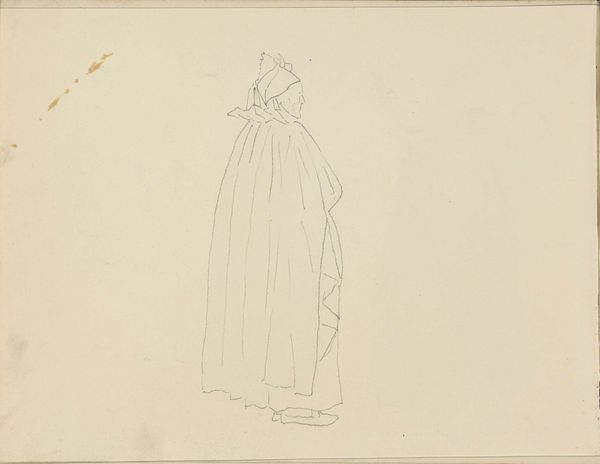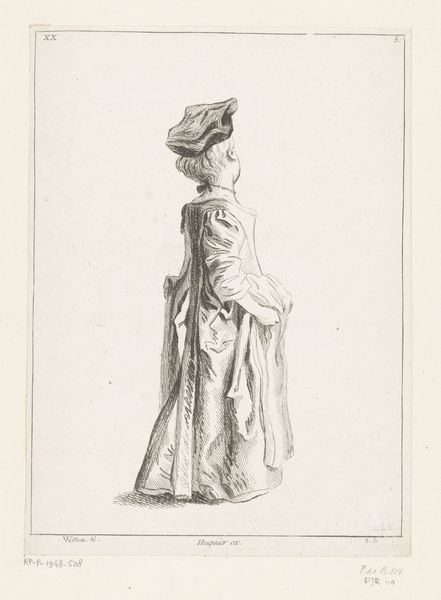
Dimensions: height 440 mm, width 290 mm
Copyright: Rijks Museum: Open Domain
Editor: Here we have George Hendrik Breitner's "Standing Lady with Hat and Parasol," a pencil drawing from the late 19th, early 20th century. It has such a fleeting, ephemeral quality to it. What captures your attention most in this sketch? Curator: The emphasis on line, the rapid and economical application of pencil – it speaks volumes about Breitner’s working process. Consider the societal role of sketching at this time; often quick studies for more labourious and commercially driven work. Is this purely a personal sketchbook, or is it designed as something more? Editor: It seems so casual, almost like a preliminary sketch rather than a finished work. Curator: Precisely. Think about the material constraints, the cost of paper, the social pressure on artists to produce 'finished' pieces. This kind of drawing represents a different relationship to artistic labor. It foregrounds the process of image-making. How does it relate to the more polished work he, and his contemporaries are doing? Is the status of women any different? Is he producing a disposable object, compared to oils that sell better? Editor: That makes me think about how quickly and efficiently he must have been working to capture the figure like this. Were such depictions considered less 'valuable', literally, due to the speed of their creation and choice of material? Curator: Absolutely. This era witnesses a complex dance between high art and craft. Pencil sketches, by virtue of their ease of production, were often relegated to a lower status than painting or sculpture, deemed less ‘valuable’ in both artistic and economic terms. And did this status have a cultural or social correlate at this time, in relation to who consumed them? Who bought them, in short? Editor: I hadn’t considered it in that light. Thinking about the materials and process makes me appreciate the sketch as more than just a study; it's a document of a specific moment in artistic production. Curator: Exactly! By examining the means of production and consumption, we can gain a deeper understanding of its artistic and societal relevance.
Comments
No comments
Be the first to comment and join the conversation on the ultimate creative platform.
